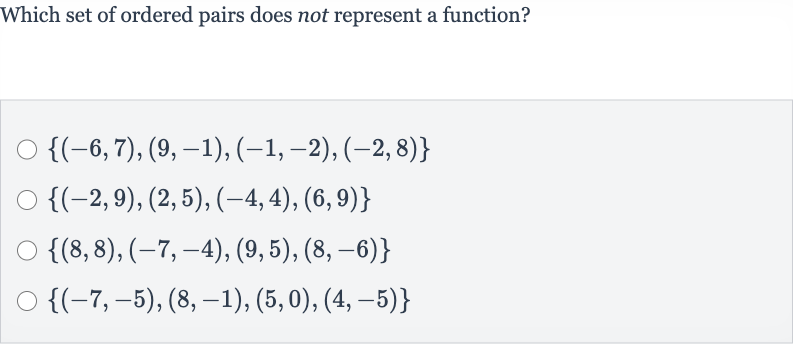Full solution
Q. Which set of ordered pairs does not represent a function?
- Define Function Representation: A set of ordered pairs represents a function if each input ( extit{x}-value) is associated with exactly one output ( extit{y}-value). We need to check each set of ordered pairs to ensure that no extit{x}-value is repeated with different extit{y}-values.
- Check First Set: Check the first set: Each -value is unique, so this set represents a function.
- Check Second Set: Check the second set: Each -value is unique, so this set also represents a function.
- Check Third Set: Check the third set: The -value appears twice with different -values ( and ). This violates the definition of a function.
- Final Conclusion: Since the third set has a repeated -value with different -values, it does not represent a function. We do not need to check the fourth set because we have already found a set that does not represent a function.
More problems from Write a quadratic function from its x-intercepts and another point
QuestionGet tutor help
QuestionGet tutor help
QuestionGet tutor help
QuestionGet tutor help
QuestionGet tutor help
QuestionGet tutor help
QuestionGet tutor help
QuestionGet tutor help

